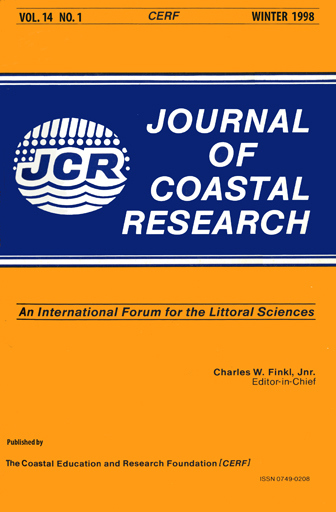Measuring and Modelling Sediment Transport on a Macrotidal Ridge and Runnel Beach: An Intercomparison
Keywords:
Sediment transport measurements, hydrodynamics, intertidal zone, macrotidal beach, ridge and runnel beach, tracer, waves, currents, sediment transport modelingAbstract
Observations of hydrodynamics, fluorescent tracer dispersal and beach morphology were acquired in the intertidal zone of a macrotidal ridge and runnel beach. High frequency hydrodynamic data from pressure transducers and electromagnetic current meters were used to describe flow patterns in the intertidal zone while sediment transport rates were estimated using energetics and empirical models. Results from fluorescent tracer experiments provided information on net sediment movement over periods ranging from one to five tidal cycles whereas morphometric analysis was carried out to determine net beach movement during a period of 24 tidal cycles.
Comparison of the results showed that sediment transport based on the hydrodynamic measurements did not agree with sediment movement derived using the tracer and morphometric methods. This disagreement is because the latter methods integrate processes occurring throughout the whole tidal cycle including those at very low water depths (swash zone processes). Hydrodynamic data were limited to periods of the tidal cycle when the mean water depth was greater than 0.5 m. Such limitation, imposed by the physical dimensions, principle of operation and installation procedures of the instruments is common in nearshore studies. Sediment transport results obtained by using hydrodynamic data obtained in macrotidal areas would be incomplete if swash-zone processes are not covered by the sampling scheme. However, comparison of results obtained for shorter periods (i.e. excluding shallow water) with those from other methods that integrate over the whole tidal cycle can be used to extract information on sedimentary processes for periods where no direct data are available.


